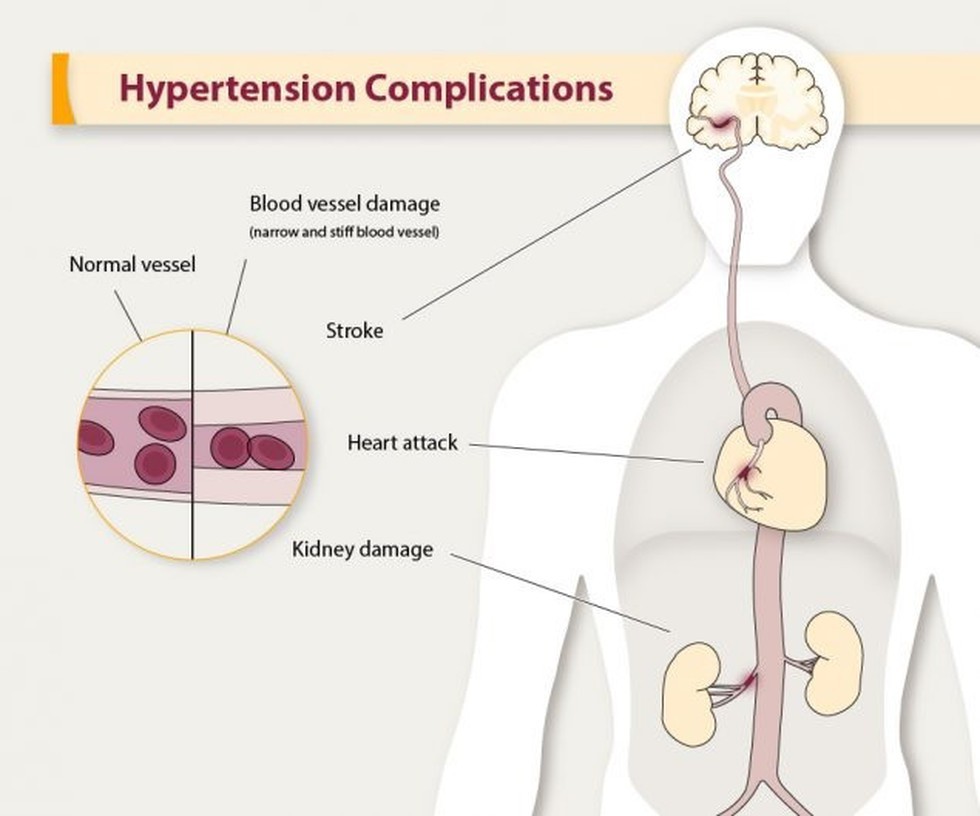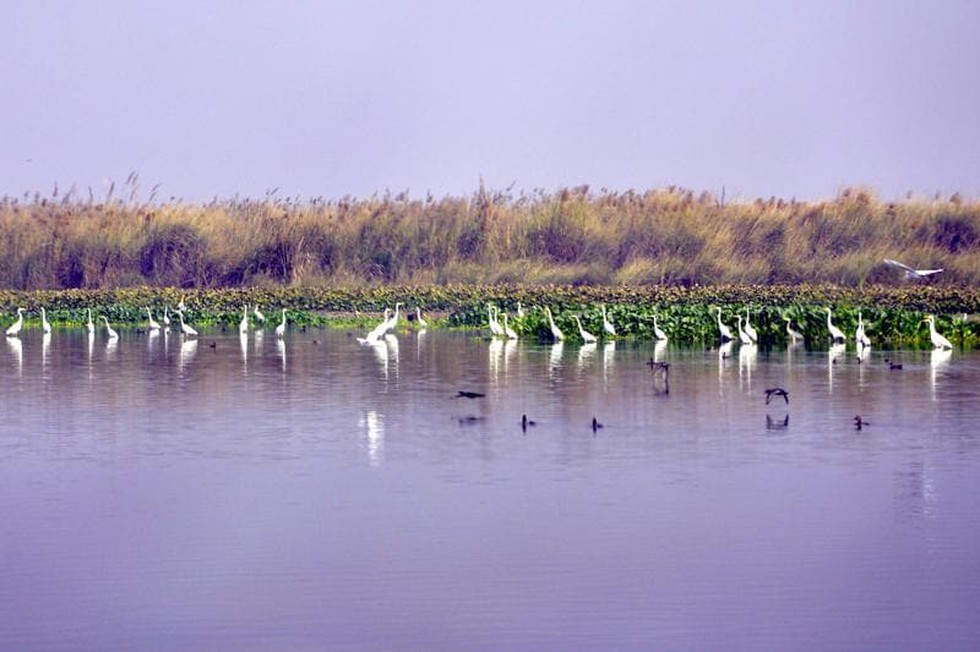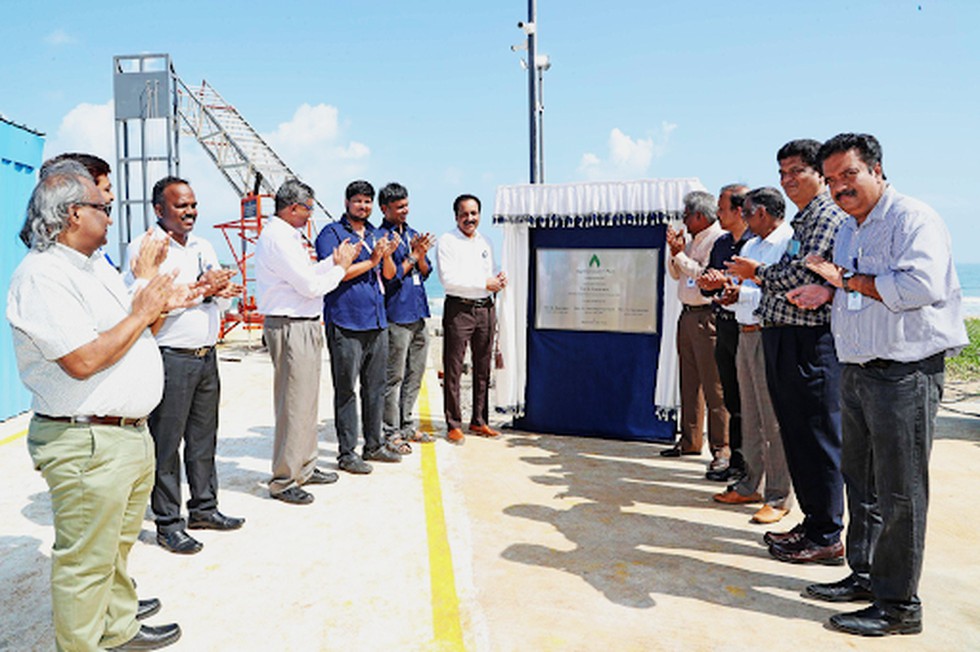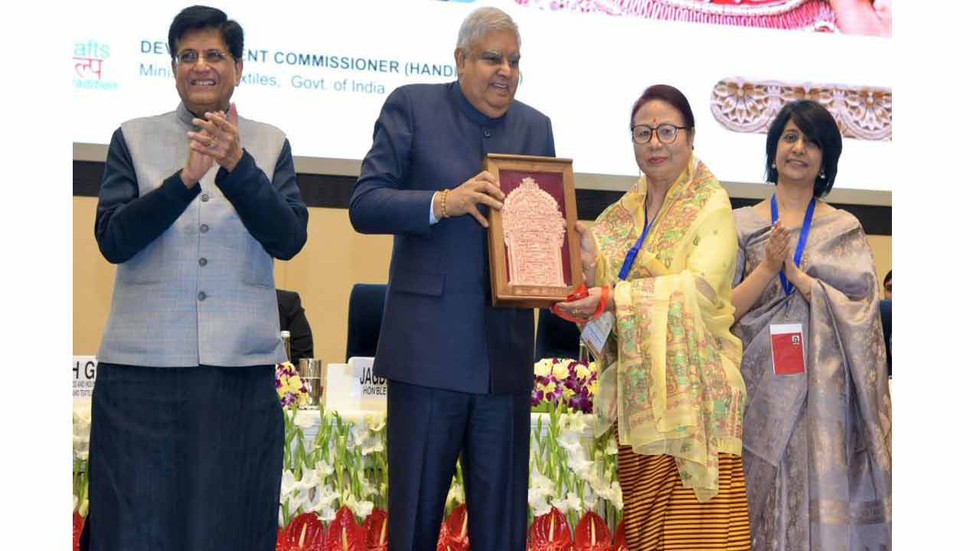
About:
- The new technology tracks the ball using 12 dedicated tracking cameras positioned below the stadium's roof and analyses up to 29 data points for each player, 50 times per second, to determine their precise location on the field.
- All limbs and extremities that are important for determining offside are included in the 29 data points.
- The inclusion of an inertial measuring unit (IMU) sensor into the match ball would add another crucial component in making close offside calls at the World Cup.
- The kick point may be identified with extreme precision thanks to this sensor, which is located in the centre of the ball and feeds ball data to the video operation room 500 times per second.
- The innovative system automatically alerts the video match officials inside the video operation room whenever the ball is received by an attacker who was in an offside position when the ball was played by a teammate by merging the limb- and ball-tracking data and applying artificial intelligence.
- The video match officials then personally verify the automatically generated kick point and the automatically generated offside line, which is based on the computed positions of the players' limbs, before advising the on-field referee of the proposed decision.
- Thanks to this technique, offside decisions will be made more quickly and precisely which will takes a few seconds to complete.

About:
- The study reinforces uncontrolled BP as a significant contributor to mortality.
- It follows the Centre’s 2019-20 National Family Health Survey (NFHS-5) that reported a hypertension prevalence of 24% in men and 21% in women, an increase from 19% and 17% over the 2015-16 survey.
- Patients with readings of systolic <140 mmHg and diastolic <90 mmHg are defined as those with hypertension under control.
- Hypertension control rate is defined as the proportion of patients with BP under control (systolic <140 mmHg and diastolic <90 mmHg).
- The Lancet Regional Health-Southeast Asia study is based on a diversified analysis of studies of BP control rates between 2001 and 2022 in India.
- Despite government efforts, awareness and better access to healthcare facilities, the number of patients able to control hypertension has only grown from 6% to 23% in the past 21 years.
- The Lancet researchers included 51 studies involving 3. 4 lakh patients.
- Of these, 21 studies (41%) reported poorer BP control rates among males than females, and six (12%) poorer rates among rural patients.
- The combined control rate in India in 2001-20 was 18%, with significant increase over the years, reaching 23% in 2016-20.
- The study indicated significantly better control rates in the south and west, and considerably poorer rates among males.

About:
- Football uses a running clock unlike basketball or hockey, which does not stop even when the game is interrupted for various reasons such as substitutions, goals scored or injuries to players.
- According to the International Football Association Board’s Laws of the Game, the referees add time on for substitution, assessment and/or removal of injured players, wasting time, disciplinary sanctions, medical stoppages permitted by competition rules, delays relating to video assistant referee (VAR) checks and reviews, any other cause, including any significant delay to a restart, such as goal celebrations.
- The stoppage time is calculated by taking into account all such interruptions in play during a half and the fourth official raises an electronic board displaying the time added on at the end of each half.
- However, the play can go on for longer than the added-on time if the on-field referee feels that there have been further interruptions during the injury time warranting its extension.
- The law says that the referee must not compensate for a timekeeping error during the first half by changing the length of the second half.
- However, traditionally, second-half stoppage time has been found to be longer than that of the first half.
History:
- A game between English clubs Aston Villa and Stoke City in 1891 is widely believed to be the trigger for the introduction of injury time in football.
Extra Time:
- While terms like injury time and additional time have been used interchangeably for stoppage time, extra time is different.
- It is the period of time added to a knockout game to determine a winner if the scores are tied even after the regular 90 minutes and the stoppage time.
- Typically, the extra time is 30 minutes (two halves of 15 minutes).

About:
- Shiveluch is one of the largest and most active volcanoes in Kamchatka, having erupted at least 60 times in the past 10,000 years.
- It has two main parts:
- Old Shiveluch, which tops 3,283 metres (10,771 ft), and
- Young Shiveluch – a smaller, 2,800-metre peak protruding from its side.
- Young Shiveluch lies within an ancient caldera – a large crater-like basin that likely formed when the older part underwent a catastrophic eruption at least 10,000 years ago.
- The volcano has been continuously erupting since August 1999, but occasionally undergoes powerful explosive events, including in 2007.
Kamchatka:
- Kamchatka is home to 29 active volcanoes, part of a vast belt of Earth known as the “Ring of Fire” which circles the Pacific Ocean and is prone to eruptions and frequent earthquakes.
- Most of the peninsula’s volcanoes are surrounded by sparsely populated forest and tundra.
- Six volcanoes in Russia’s northeast are currently showing signs of increased activity, including Eurasia’s highest active volcano Klyuchevskaya Sopka.

About:
- Harike wetland, spread over 86 square kilometers in Tarn Taran, Ferozepur, and Kapurthala districts, serves as a home to rare species of migratory water birds during the winter season.
- Harike Wetland also known as "Hari-ke-Pattan", with the Harike Lake in the deeper part of it, is the largest wetland in northern India.
- The wetland and the lake were formed by constructing the headworks across the Sutlej river in 1953.
The headworks is located downstream of the confluence of the Beas and Sutlej rivers just south of Harike village. - It has been designated as one of the Ramsar sites in India.
- Apart from the Harike wetland, migratory water birds also arrive at Keshopur Miani wetland, Nangal wetland, Ropar wetland, Kanjli wetland and Beas river wetland in Punjab.

About:
- The facility, which was designed by Agnikul and executed in support with ISRO and IN-SPACe (Indian National Space Promotion and Authorization Center) has two sections to it:
- the Agnikul launchpad (ALP) and
- the Agnikul mission control center (AMCC).
- All critical systems connecting these two sections, which are 4 km away from each other, are redundant to ensure 100% operationality during countdown.
- The launchpad is specifically built keeping in mind the necessity to support liquid stage controlled launches, while also addressing the need for ISRO’s range operations team to monitor key flight safety parameters during launches.
- Additionally, it has the ability to, as necessary, share data and other critical information with ISRO’s Mission Control Center.
- Agnikul’s first launch, which will be a controlled and guided mission, a vertical launch, using its patented engine will happen from this launchpad.
- The mission will be a technology demonstrator that will mirror Agnikul’s orbital launch but at a reduced scale.
Agnibaan:
- Agnibaan is Agnikul’s highly customizable, two-stage launch vehicle, capable of taking up to 100 kg payload to orbits around 700 km high (low Earth orbits) and enables plug-and-play configuration.
Agnilet:
- Agnilet is the world’s first single-piece 3-D printed engine fully designed and manufactured in India and was successfully test-fired in early 2021, making Agnikul the first company in the country to test its engines at ISRO.
- Agnibaan and Agnilet will be used in the Agnikul’s first launch.
Agnikul:
- It was founded in 2017 by Srinath Ravichandran, Moin SPM and Professor S.R. Chakravarthy from IIT Madras.
- Agnikul is an IIT Madras incubated startup.
- It became the first Indian company to sign an agreement with ISRO in December 2020.
- The agreement signed under the IN-SPACe initiative sanctioned Agnikul access to the Indian space agency’s expertise and facilities to build Agnibaan and its launchpads.

About:
- The proposal to include the gecko in Appendix II was made by India at the recently-concluded 19th Conference of Parties (COP19) to CITES in Panama City. The proposal was adopted by the members of the Working Group.
CITES Appendix II:
- The animals listed under Appendix II may not necessarily be threatened with extinction, but trade in such species should be controlled to ensure it does not threaten their existence.
International Union for Conservation of Nature (IUCN):
- In 2019, the Jeypore Ground Gecko was assessed for the International Union for Conservation of Nature (IUCN)’s Red List of Threatened Species and was listed as ‘endangered’.
Distribution:
- This reptile is endemic to India.
- The wild reptile species is found in the Eastern Ghats and is known to be present in four locations including southern Odisha and northern Andhra Pradesh.
- Its occurrence is estimated in less than 5,000 square kilometres of fragmented geographical area.
- The species resides below rock boulders in high forested hills at an altitude of 1,100-1,400 metres.
- Habitat loss and degradation, forest fires, tourism, quarrying and mining activity among the reasons for the species’ decline.

About:
- It is an initiative under Khadi & Village Industries Commission (KVIC).
- It is running this project in 7 states of the country, namely in Karnataka, Maharashtra, West Bengal, Assam and Orissa.
- Under this project fencing of bee boxes is installed in such areas from where elephants move towards the human settlements and farmers' agriculture.
- Fencing of Bee-boxes on the routes of movement of elephants blocks the path of wild elephants.
- In this way, through honey-bees, elephants can be prevented from attacking humans and destroying farmers' crops.
National Honey Mission:
- Project RE-HAB is a sub-mission of KVIC’s National Honey Mission.
- The Honey Mission is a programme to increase the bee population, honey production and beekeepers’ income by setting up apiaries.

About:
Shilp Guru Awards:
- The Shilp Guru Awards are given to legendary master craftspersons in recognition of excellent craftsmanship, product excellence and the role played by them as gurus in the continuance of crafts to other trainee artisans as a vital part of traditional heritage.
- The Awards were started in 2002, to celebrate the Golden Jubilee of the resurgence of Handicrafts in India.
- The Award consists of a gold coin, 2.00 lakhs prize money, a Tamrapatra, a shawl and a certificate.
National Awards:
- The National Awards are being awarded since 1965 for outstanding craftsmanship in different craft categories.
- The main crafts for which the Awards have been given are Metal Engraving, Chikan Hand Embroidery, Khurja Blue Pottery, Mata Ni Pachedi Kalamkari, Bandhani, Tie & Dye ,Hand Block Bagh Print, Warli Art, Stone Dust Painting , Sozni Hand Embroidery, Terracotta, Tanjore Painting, Sholapith, Kantha Hand Embroidery, Palm leaf Engraving, Brass wire inlay on wood, Wood Tarkashi, Madhubani Painting, Gold Leaf Painting , straw craft etc.
- The Award consists of 1.00 lakh prize money, a Tamrapatra, a Shawl and a certificate.

About:
- The Summit is India’s annual flagship event on Geotechnology and is co-hosted by the Ministry of External Affairs and Carnegie India.
- The theme for this year’s Summit is ‘Geopolitics of Technology’.
- During the summit, the world’s leading minds in technology, government, security, space, startups, data, law, public health, climate change, academics, economy will gather and debate the vital questions related to technology and its future.
- They will discuss the advantages and challenges of technologies, sustainability, emerging geopolitics in the technology sector, and data for development and ideas for India's G20 Presidency.





























































































































































.png)
.png)
.png)
.png)
.png)


.png)
.png)
.png)





.png)
.png)






.png)
.png)
.png)
.png)
.png)
.png)
.png)
.png)
.png)

.png)







.png)
.png)


.png)
.png)
.png)


.png)

.png)
.png)





.jpg)

.png)
.png)


.png)

.png)
.png)
.png)

.jpg)

.jpg)


.png)

.png)
.png)
.png)
.png)
.png)
.png)
.png)
.png)
.png)
.png)




.png)

.png)





.png)
.png)
.png)
.png)
.png)
.png)
.png)
.png)
.png)
.png)
.jpg)
.jpg)

.png)
.png)
.png)
.png)
.png)
.png)
.png)
.png)
.png)
.png)
.png)
.png)
.png)
.png)
.png)
.png)
.png)
.png)
.png)
.png)
.png)
.png)



.png)
.png)

.jpg)
.jpg)


.jpg)
.jpg)
.jpg)
.jpg)
.jpg)

.jpg)








.jpg)
.jpg)
.jpg)
.jpg)
.jpg)

















.jpg)
.jpg)







.jpg)


















.jpg)
.jpg)



























































































.jpg)
.jpg)


























.jpg)

.jpg)










.jpg)








.jpg)




.jpg)










.jpg)


















.jpg)












































.jpg)














.jpg)
.jpg)
.jpg)





.jpg)

.jpg)
.jpg)





































































.jpg)


































.jpg)
.jpg)
















































.jpg)












.jpg)


.jpg)




.jpg)
.jpg)
.jpg)

.jpg)
.jpg)
.jpg)
.jpg)

.jpg)
.jpg)
.jpg)

.jpg)
.jpg)
.jpg)
.jpg)
.jpg)
.jpg)
.jpg)
.jpg)

.jpg)


.jpg)
.jpg)
.jpg)
.jpg)
.jpg)
.jpg)
.jpg)
.jpg)
.jpg)
.jpg)











.jpg)
.jpg)





.jpg)
.jpg)
.jpg)
























.jpg)
























.jpg)









.jpg)
.jpg)







.jpg)
.jpg)









































.jpg)
.jpg)
.jpg)
.jpg)
.jpg)

.jpg)
.jpg)
.jpg)
.jpg)
.jpg)


.jpg)
.jpg)
.jpg)
.jpg)
.jpg)

.jpg)
.jpg)
.jpg)
.jpg)
.jpg)
.jpg)
.jpg)
.jpg)
.jpg)
.jpg)
.png)

.png)
.png)

.png)
.png)
.png)
.png)


.jpg)
.jpg)

.jpg)
.jpg)
.jpg)

.png)
.png)
.png)
.png)
.png)
.png)
.png)

.png)
.png)
.png)
.png)
.png)
.png)
.png)
.png)
.png)
.png)





































































-min.png)



.png)




.png)








































